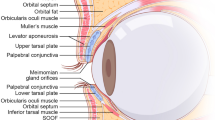Abstract
The ability of the pilonidal sinuses to spread laterally into both gluteal regions, governed by the skin vulnerability, raises the theoretical probability of a similar skin characteristic of the donor site from which most of the flaps used for repair of the PNS are taken. The present study aimed at a clinical outcome and histologic study of the use of paraspinal transposition flap for treatment of recurrent pilonidal sinus disease. This was a prospective clinical study that enrolled all patients who presented to our General Surgery Clinic, Kasralainy Hospital, Cairo University, with recurrent pilonidal sinus in the period from July 2007 till August 2017. They underwent excision of their pilonidal sinus and the use of paraspinal transposition flap to cover the defect. Histologic studies were done for the skin from both areas. This study ended up with 84 adult patients with recurrent pilonidal disease. The follow-up period ranged from 9 to 108 months (mean 70.45 months). All the patients reported pain scores from 0 to 3 during the first postoperative week. Incidence of early minor complications including mild wound dehiscence, sloughing at the tip of the flap, wound infection, and edema occurred in 21 patients (25%). Three patients developed recurrence (3.57%). Histological examination revealed deep pits lined by stratified squamous epithelium (SSE) at the macroscopic healthy skin at the edge of resection. Those changes were absent in biopsies from the flap skin. The paraspinal flap has good results in management of recurrent pilonidal disease. Also, histological findings suggest that the skin over both glutei is as vulnerable as the skin of the excised sinus which is different from the skin over the lower back. This explains that use of that skin to cover the defect is more prone to develop recurrence.



Similar content being viewed by others
References
Chintapatla S, Safarani N, Kumar S, Haboubi N (2003) Sacrococcygeal pilonidal sinus: historical review, pathological insight and surgical options. Tech Coloproctol 7:3–8
Armstrong JH, Barcia PJ (1994) Pilonidal sinus disease: the conservative approach. Arch Surg 129:914–919 discussion 917-9
Akinci OF, Coskun A, Uzunköy A (2000) Simple and effective surgical treatment of pilonidal sinus: asymmetric excision and primary closure using suction drain and subcuticular skin closure. Dis Colon Rectum 43:701–707
Karydakis GE (1992) Easy and successful treatment of pilonidal sinus after explanation of its causative process. Aust N Z J Surg 62(5)):385–389
Gupta S, Chattopadhyay D, Agarwal AK, Guha G, Bhattacharya N, Chumbale PK, Murmu MB (2014) Paraspinal transposition flap for reconstruction of sacral soft tissue defects. Asian Spine J 8(3):309–314
Mathur BS, Tan SS, Bhat FA, Rozen WM (2016) The transverse lumbar perforator flap: an anatomic and clinical study. J Plast Reconstr Aesthet Surg 69(6):770–776
Cormack CC, Lamberty BGH (1986). The arterial anatomy of the skin flap. Publisher: Churchill Livingstone Edinbrugh. P: 138
Sondenaa K, Nesvik I, Anderson E, Natas O, Soreide JA (1995) Patient characteristics and symptoms in chronic pilonidal sinus disease. Int J Color Dis 10(1):39–42
Bascom JU (1981) Pilonidal disease: correcting over treatment and under treatment. Contemp Surg 18:13–28
Nivatvongs S Pilonidal sinus. In: Gordon PH, Nivatvongs S (eds) Principles and practice for the colon, rectum and anus, 3rd edn. Pub. Informa healthcare, New York, pp 235–246
Steele SR, Perry B, Mills S, Buie D (2013) Practice parameters for the management of pilonidal disease. Dis Colon Rectum 56:1021–1027
Wood RA, Hughes LE (1975) Silicone foam sponge for pilonidal sinus: a new technique for dressing open granulating wounds. Br Med J 4(5989):131–133
Dwivedi AP (2010) Management of pilonidal sinus by Kshar Sutra, a minimally invasive treatment. Int J Ayurveda Res 1(2):122–123
Funding
This study was completely funded by the Faculty of Medicine, Cairo University
Author information
Authors and Affiliations
Corresponding author
Ethics declarations
Conflict of Interest
The authors declare that they have no conflict of interest.
Informed Consent and Ethical Committee
The study was approved by the ethical committee of Kasr-Alainy hospital, Cairo University. An informed written consent was taken from each patient before surgery.
Additional information
Publisher’s Note
Springer Nature remains neutral with regard to jurisdictional claims in published maps and institutional affiliations.
Rights and permissions
About this article
Cite this article
Farag, A., Nasr, S.E., Farag, A.A. et al. The Use of Paraspinal Transposition Flap for Recurrent Pilonidal Sinus, a New Histological Basis for Management of Pilonidal Sinus Disease. Indian J Surg 82, 514–519 (2020). https://doi.org/10.1007/s12262-019-02038-4
Received:
Accepted:
Published:
Issue Date:
DOI: https://doi.org/10.1007/s12262-019-02038-4




